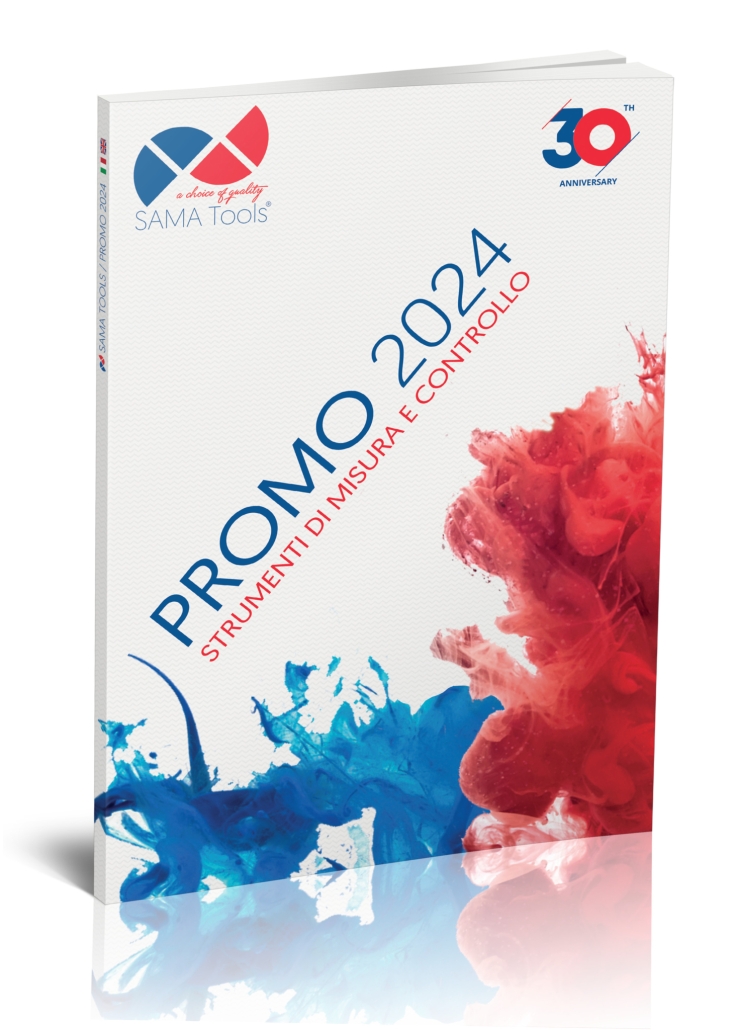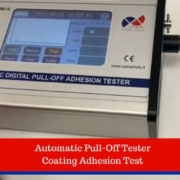Film mechanical performance measurement
Film mechanical performance measurement is the perfect complement of coating thickness measurement when it comes to controlling the quality of coatings applied on different substrates.
Of course, this makes measuring all the properties related to the mechanical performance of the coating a very important activity for many different industries to guarantee their products match the standards of their sector.
What is film mechanical performance measurement?
Measuring the mechanical performance of a film or coating involves a series of checks and verifications that fall in the category of non-destructive testing.
However, some of the tests used for film mechanical performance measurement may alter the state of the final product or sample that is being tested.
Some of the most common tests included in the series of film mechanical performance measurement are:
- Verification of the adhesion to the substrate.
- Verification of coating elasticity.
- Surface hardness test.
- Scratching resistance test.
- Abrasion verification.
- Rubbing verification.
Among the tests mentioned above, the verification of the adhesion to the substrate must be highlighted, as it provides information regarding the durability of the coating.
A low adhesion result may indicate a premature failure of the coating layer.
 |
DOWNLOAD NOW |
Why is film mechanical performance measurement important?
It was mentioned before that this series of measurements complement the coating thickness measurement, an essential activity for quality control.
Therefore, film mechanical performance measurement adds up to improve the quality control of coated products.
Working together with the coating thickness measurement, film mechanical performance measurement provides quality control operators the capability of:
- Identifying the possibility of coating layer loss that may result in corrosion.
- Identifying incorrect coating adhesion that may lead to premature failure of the coating.
- Identifying that the coating mechanical properties match design requirements.
- Identifying that coating coming from suppliers matches order requirements.
Moreover, timely detecting any problem on the coating can result in an increased lifespan of the coated part and a very significant reduction of costs in the long term.
How to measure the mechanical performance of coatings?
As it was described above, there are different tests used to measure the mechanical performance and different properties of coatings. Let’s dig into each of them.
Verification of the adhesion to the substrate
The verification of the adhesion to the substrate are usually performed by means of instruments known as cross hatch adhesion testers or pull-off adhesion testers.
Cross hatch adhesion testers are generally used to determine if the various coats of paint are firmly anchored to the support. When various layers of different coating materials are applied, these instruments allow one to verify the adhesion between layers.
The measuring procedure consists in sliding the head of the instrument on the sample in orthogonal direction to track a grid on the coating. Then, the operator compares the status of the coating after the test with an internationally acknowledged table to determine the grade of adhesion of the sample tested.

In the picture: Cross hatch tester SADT502
Futhermore, we also offer cross hatch adhesion testers that come with different metal heads.
For more information on cross hatch adhesion testers, check out our SADT502 model here.
On the other hand, pull-off adhesion testers are used to measure the force required to pull a metallic dolly with known diameter away from its substrate by using hydraulic pressure.
The instrument evaluates the adhesion or pull-off strength of a coating by determining the greatest tensile pull-off force that it can bear before detaching.
We provide a handheld digital pull-off adhesion tester that makes it easy for any quality control operator to perform this test.
Verification of coating elasticity
The tests to verify the elasticity of the coating can be performed by using three different instruments.
First, we have coating bend testers. These instruments enable the operator to determine the resistance to crack or the stripping performance of the coating. The process consists in bending the sample against cylindrical shafts or conical mandrels to see whether any cracks or stripping appear. For more information, check out our SA564, SA566, and SA568 models.
The second option is the impact tester. Impact tests can be performed on a wide variety of coating materials including:
- Paint.
- Varnish.
- Water-based wood coatings.
- High viscosity plastic coatings.
- Laminated coatings.
To learn more about our impact testers check out our SAITS301, SAITS305 and SAITS306 models.

In the picture: Digital Cupping tester SACT-309 – SACT-310
Finally, the third option are our cupping testers. Cupping testers are normally used to evaluate crack resistance and detachment from metal substrate of a coated surface. Cupping tests are very accurate and can be performed both manually or automatically depending on the type of instrument used. Check out our SACT309 and SACT310 models to learn more.
Surface hardness test
This is considered a surface-type check that can be performed to test the hardness of the coating, which is another mechanical property. The most common surface hardness tests instruments used to check the hardness of coatings are:
These three instruments are very helpful for quality control operations. Selecting one or the other will depend on each specific case.

In the picture: Pendulum hardness tester SA509
Scratching resistance test
This is a process used to measure the hardness of the coating by learning how resistant it is to scratches.
The procedure involves the generation of a controlled scratch with an indenter on a selected area. Then, a stylus is moved over a specimen surface with a linearly increasing load until failure occurs at critical loads. According to test procedures, constant or progressive load can be applied in order to get different levels of failure. The load at which such failure of the coating occurs is termed as the critical load.
Of course, high accuracy is of uttermost importance, which is why an automated scratch tester like our SAAST520 model is recommended.
Abrasion and rubbing verification
This verification involves assessing the resistance to abrasion and rubbing of different coating materials and even printed materials like labels.
There are different tests that can be applied and different instruments to be used. Among the most common instruments, we have:
- Rub resistance tester
- Rotational abrasion tester
- Solvent rub resistance tester (MEK test)
- Multifuncion abrasion scrub testers
How to choose the right film mechanical performance measurement tool?
Acquiring a film mechanical performance measurement tool is very important, and it is also important to select the best option for the application at hand. There are different aspects that require consideration when selecting the right tool.
The most relevant are:
- The type of test that is required.
- Whether the surface accepts alteration or not.
- The type of material being tested.
- The need for portability.
Would you like to see the film mechanical performance measuring instruments we offer in order to select the most suitable for your application?
You can immediately look through and consult the technical data sheets here.
On the other hand, if you are not sure or have any doubts about measuring and controlling the mechanical properties of coatings, please contact us and one of our experts will gladly help you.
P.S: We are also on Linkedin. Follow us for more updates!











